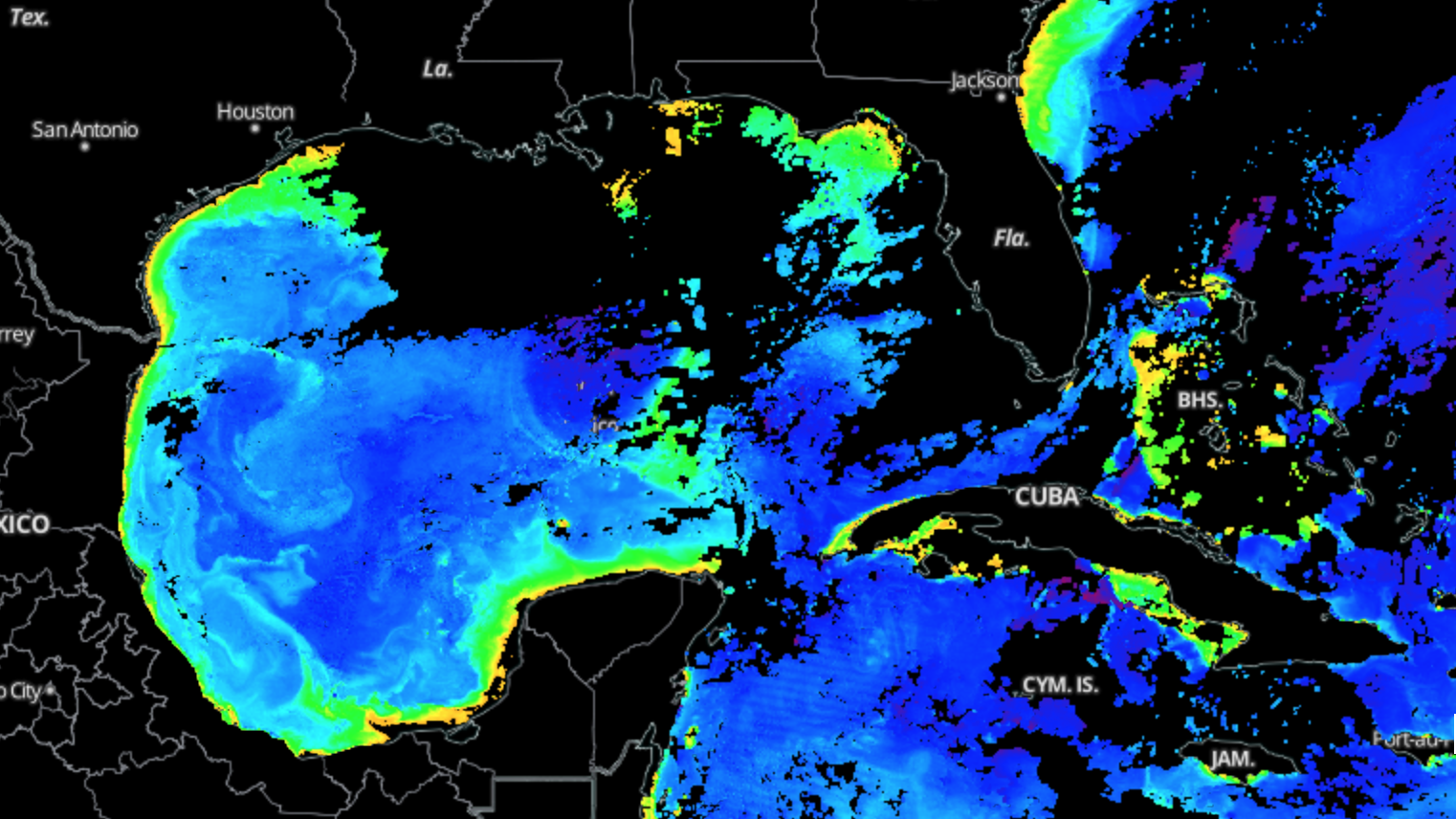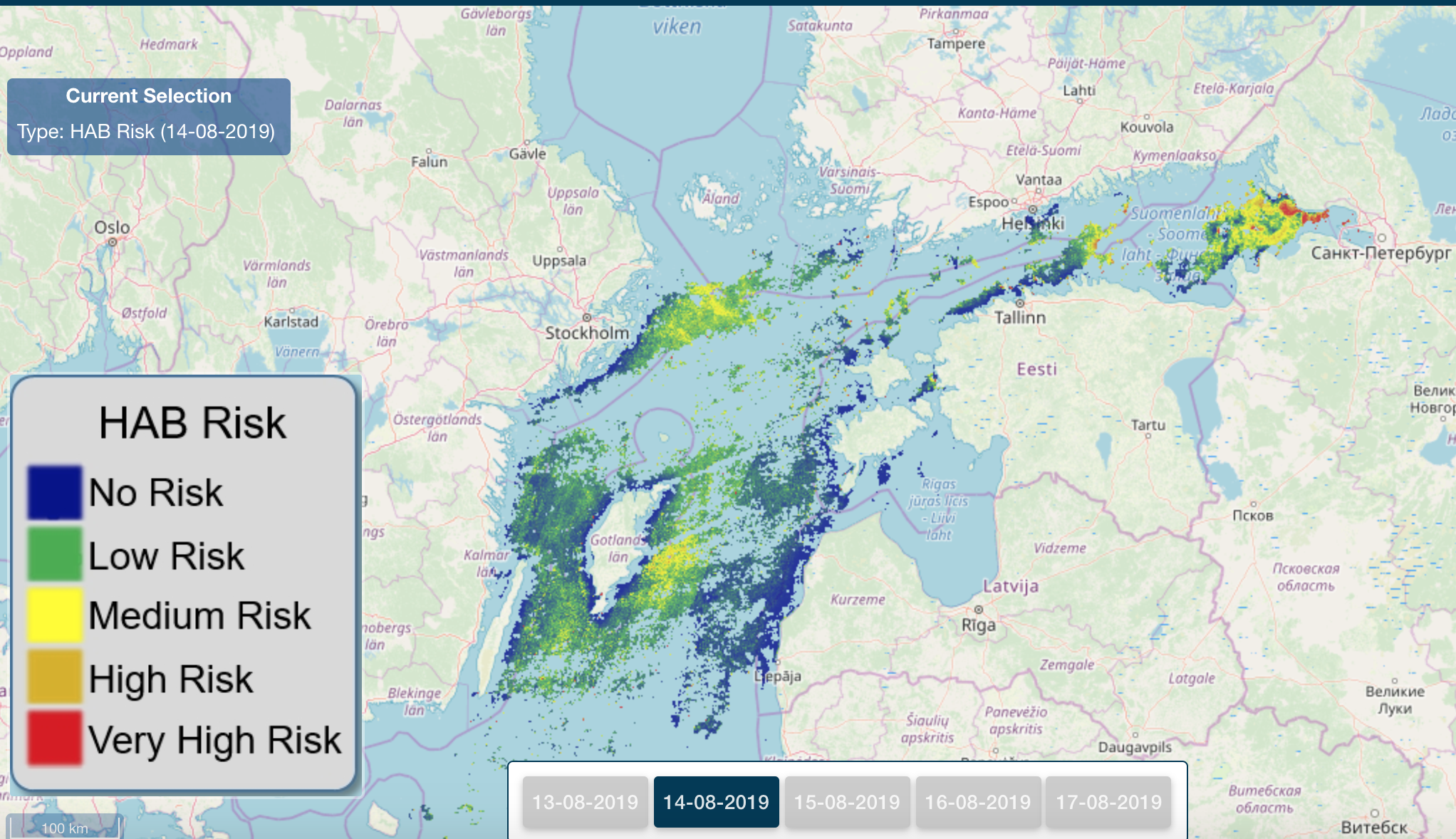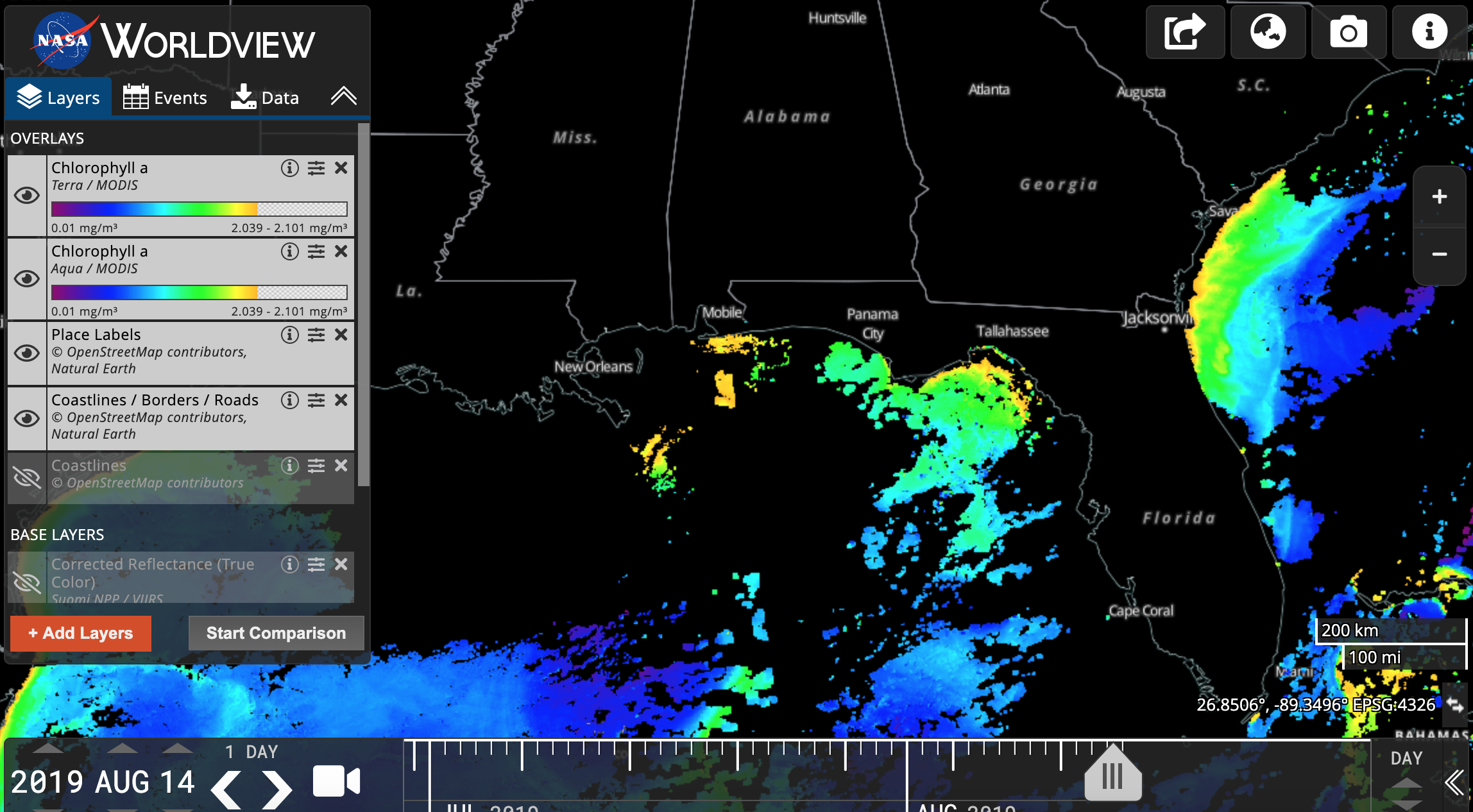4 things to know about Harmful Algal Blooms

These days some large media websites (here and here), and Twitter too, are buzzing about Harmful Algae Blooms (HABs) that happen across the U.S., and, unfortunately, led to a fatal illness of some dogs whose owners were unconscious about the toxicity of the blooming waters.
What is blooming, how toxic the blooming waters can be, what causes the development of the Harmful Algae Blooms, and how to avoid the risk of poisoning — here are 4 things that you must know about HABs.
1. It can bloom but it's not a plant
When people speak about algae, they usually imagine some kind of a sea plant, like kelp. If fact, we are dealing with a wide range of organisms that aren't even plants, although they have chloroplasts and capable of photosynthesis.
Accordingly to Collins (1978), there are three species responsible for the majority of reported alga-caused deaths: Cyanophycophyta (blue-green algae [cyanobacteria]), Chrysophycophyta (diatoms, yellow-green and golden algae), and Pyrrhophycophyta (dinoflagellates).
2. Algae can be very toxic (and I mean it)
Aside from the letal toxic effects, sympthomps of poisoning include diarrhea, abdominal cramps, acute and chronic toxicity, and ulcerative tissue changes (Collins, 1978). And the algal poisoning can strike really, really fast.
“It only took one hour from the time we left the water for Oliver to breathe his last breath,” wrote Brittany Stanton, owner of a 2-year-old golden retriever.
The New York Times, 2019
To learn more about algae's toxicity, numerous experiments were made on mices. To my sadness, that's how the science work today.
When scientists explored the effects of algae toxicity, three labels were introduced, with not too much creativity in naming. These are: slow death factor (SDF), fast death factor (FDF), and very fast death factor (VFDF).
So for SDF, it took quite a while for toxin to kill a mice — from 4 to 48 hours. Now compare this to 1 to 2 minutes for sympthoms preceding death to appear in case of VFDF! In the last case, death was caused by the blue-green alga Anabaena flos-aquae (Collins, 1978).
3. Cimate Change may cause the Harmful Algal Blooms (most likely)
Algal blooms are not always poisonous. Various environmental parameters, like light intensity or temperature, activate or inhibit the production of toxins (Collins, 1978).
The most interesting thing is that there wasn't found a correlation with the nitrogen source. Which means that the nutrients from the soil stocks contribute less to the HABs than the temperature rise (here's the relevant discussion on Gizmodo).
4. Algae blooms are visible from Space
Algae blooms can be detected with Earth Observation data.
Scientists can find them by observing the color of the ocean, and by looking at the chlorophyll-a concentration data.
But how we, citizens, can get the insights about the coastal waters quality?
Fortunately, there are some options.
Hab Risk
If you're from Baltics, HAB Risk is an excellent tool from Polish developers that provide Cyanobacteria Bloom monitoring and forecasting.
The web portal, together with an Android app, is very intuitive. Simply zoom in to find a coastline nearby, and watch out anything that is different from green and blue.
Very cool!

Basically, HAB Risk's UI is just a map with the color-coded information about the potential risks.
My only wish is that the developers provide a bit more info about the risk criterias. For me, it looks like that they are using the Helcom's assessment model, where the HAB Risk's Very High Risk status relates to the treshold value of 2.0 µg/l (Helcom, 2019).
NASA Worldview
Worldview is a great tool from NASA that has an enournous amount of Earth Observation data, and it lets you to visualize that data in a couple of clicks.
We can get Chlorophyll-a concentration obtained by MODIS instrument that is installed on Terra and Aqua satellites.

MODIS data show high concentration (>1mg/m³) of the Chlorophyll-a in the Mexican Gulf and East Coast. The theshold is set to 2 mg/m³.
Conclusion
Phytoplankton is the first level in a food chain which results in prolific fisheries that have sustained local populations since early human evolutionary history.
At the event scale, the phytoplankton blooms can become so large that their eventual degradation causes oxygen depletion (anoxia) in the coastal waters. Additionally many of these blooms can involve phytoplankton species that contain harmful toxins (LearnEO! Lesson L12, 2014).
Earth Observation data can provide insights about quality of the waters and help us to avoid poisoning from Harmful Algae Blooms.
Stay safe, and retweet, if you liked the article.
☣️Here are the 4 things that you should know about Harmful Algal Blooms. THREAD #algae #earthobservation #algaebloom
— Ilya Bolkhovsky (@bolkhovsky) August 15, 2019
The Saturday Satellites newsletter, weekly articles about Earth Observation for Meteorology, Oceanography and Climate Change studies.
References
- Collins M. (1978). Algal toxins. Microbiological reviews, 42(4), 725–746.
- Algae Can Poison Your Dog (The New York Times, 2019). Retrieved from https://www.nytimes.com/2019/08/12/us/blue-green-algae-dogs.html
- Current Status of the Baltic Sea Chlorophyll-a (HELCOM, 2019). Retrieved from
http://www.helcom.fi/baltic-sea-trends/indicators/chlorophyll-a/results-and-confidence/ - Evers-King H., Smith M. (LearnEO! Lesson L12, 2014). Detection of Harmful Algal Blooms in Coastal Waters. Retrieved from https://www.learn-eo.org/lessons/l12/